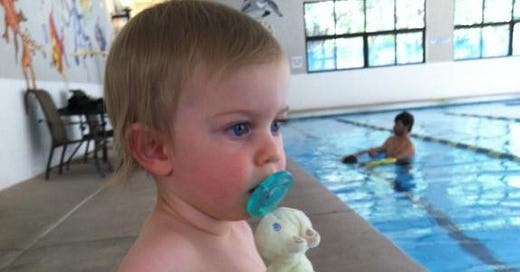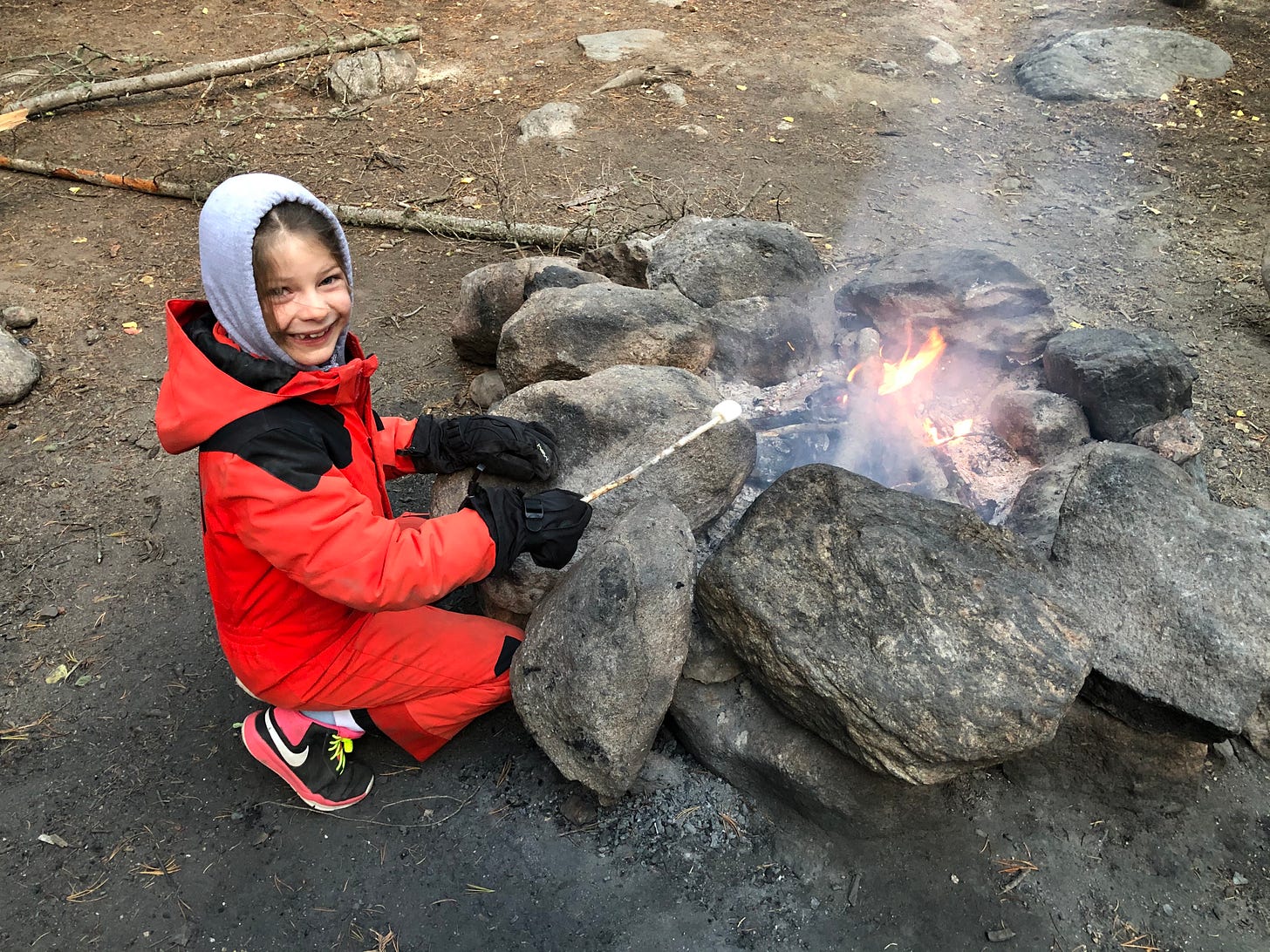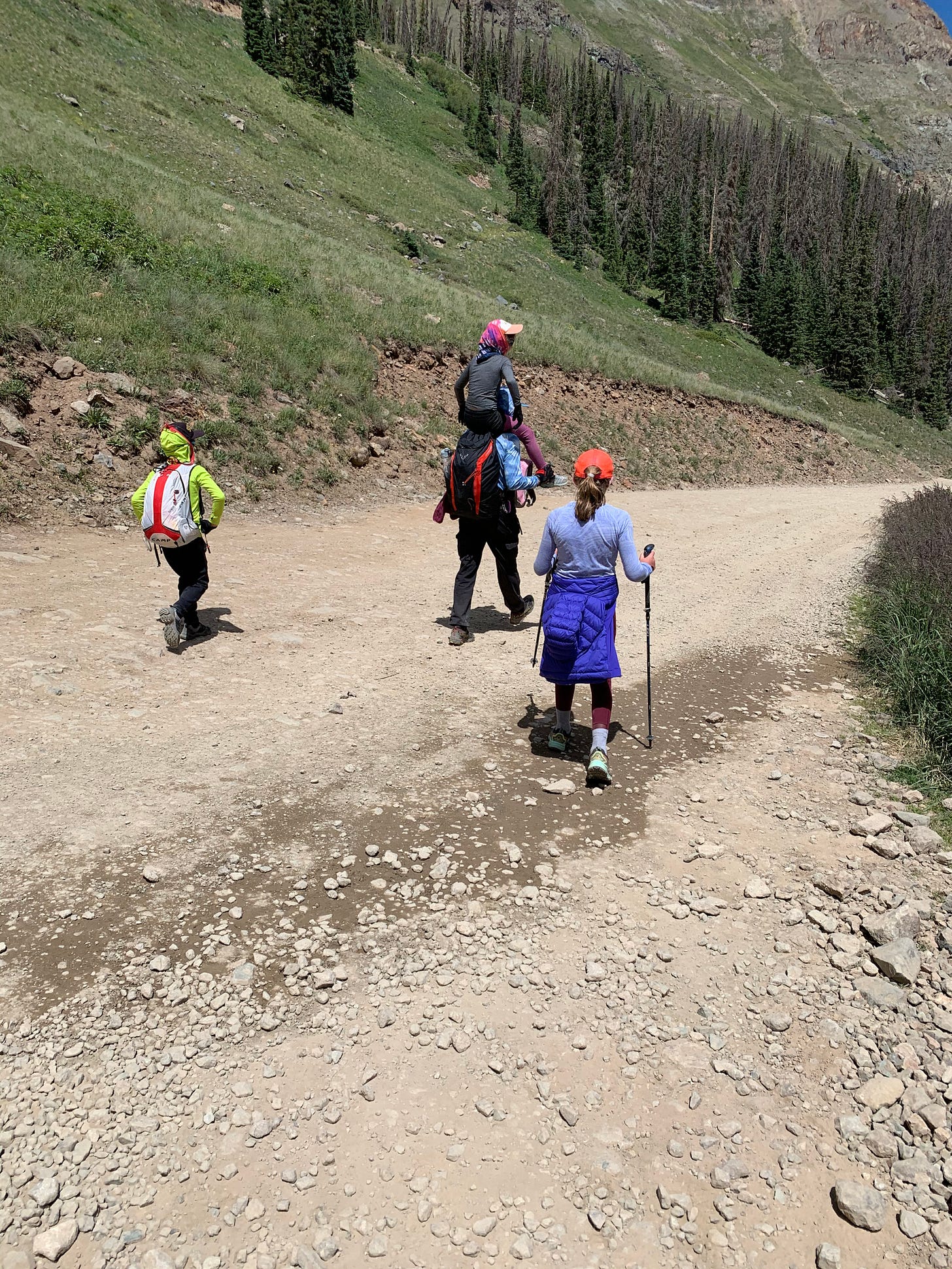I was 40 when our first child was born. Even being relatively ‘old’ for a first-time father, I failed to realize how long the process of raising kids was going to be. At the back of my head, I used to think…
This’ll clear up in 500 days, 1000 max.
Not going to happen.
So, wherever you decide to focus. Know that you need to pace yourself.
Also know, kids have in-built integrity detectors. Whenever we have a say-do gap… we’re going to hear about it.
The simplest remedy for a say-do gap is “choose wisely.” By this, I mean, pick areas where both parents are in alignment and setting the example. In practice, this mean I don’t choose much.
Here’s what matters to us, I hope it helps with your family.
Start With Daily Movement
Coming from an athletic background, we started with daily movement. As soon as the kids could stand up, we had them doing something every day.
This turned out to be a really good decision. Fit kids have more energy to bring to everything:
Focus
Learning
Concentration
Fitness set them up for their school years. As they transition, into their teen years, organized sports gives structure to their weeks, summers and overall calendar.
Far more than money, my wife and I spent TIME making this happen.
Let’s highlight a couple points about what I just wrote:
Health & Fitness set an upper limit on the amount of energy a kid (or adult) has available.
Offering kids a chance to build their general capacity takes time. In the short-term, this time benefits the family, but not the parents. To do it “right” was a dozen years away from racing, for me. For my wife, it’s 16 years, and counting.
How much time? 15 to 20,000 hours for our family. It’s a big allocation. On the far side of this allocation…
Was it worth it?
Absolutely, because of the way we went about it.
We tried to be who we wanted them to be.
While the kids were the only ones racing, we were staying fit too. This means we were maintaining our general capacity as the kids were building their own. In my 60s, and my wife’s 50s, there’s going to be a huge quality of life payoff.1
Where to focus? Start with daily movement, for everybody.
10 years before I met my wife, a habit of daily movement changed my life.
Daily Reading
When I was a kid, my parents kept the TV in a closet…
…and bought me unlimited books.
…and listened to me read aloud.
In our own family, we didn’t start the reading focus until the kids were 7-10 years old. All of our kids entered Grade One “behind” (but fit 😉).
It only took a year to catch up. They caught up quickly because they had the energy to focus on learning, and we read with them every_single_day.
Once they knew how to read, we shifted focus:
Morning Read To Self
Evening Story Time
This took a lot of time. Unlike teaching a preschooler to swim, or hike… the payoff was rapid.
In the summers, around the age of 7, I’d focus on one kid and every_single_day we would alternate pages together.
The return on reading is large. The kids became confident and learned the skills required to teach themselves (from about Grade Five, 11 years old).
It was not fun, but I’m glad I stuck with it.
Time Savers & Confidence Builders
Getting to the point where we had three “fit readers” took a DECADE.
Ten years with a focus on two things.
There’s no rush. It’s a long process however you approach it.
Frequency of interaction. Progress comes from thousands of small efforts.
We turned the corner when our youngest was in Grade One. That year we had all our kids at the same school, on a similar schedule. As time came back to us, we’d work on projects.
The projects split between time savers (for us) and confidence builders (for them).
We add one thing at a time.
We never ask much from the kid. Just a bit of daily time.
The goal is gradual skill acquisition and habit creation.
Small additions, every 3-6 months, adds up to plenty of time coming back to Mom & Dad.
Time Savers
Yard Work
Laundry
Dishes
Lunches & Cooking
House Cleaning
With the time savers, sometimes we use incentives and other times we set a date when everyone will have to take over their job.
Yard work required a cash incentive to get going.
Dishes, Lunches and House Cleaning only required a schedule and a start date.
So long as everyone is seen to contribute, and we’re firm with enforcing the schedule, it runs smoothly.
The kids need to see us doing whatever we want them to do.
Likewise, they need to not-see whatever we don’t want them to do.2
Confidence Builders
Indoor Climbing & Skiing
Overnight Camping
Race Experiences
Math Tutor
Reading Aloud
Whenever a kid would push back on learning from us… we’d take ourselves out of the situation.
The best example of this was math. For whatever reason, the kids really didn’t like learning math from us. So we hired a local teacher to help us out. The kids love her and it removed an unnecessary emotional distraction from their learning.
While they didn’t like learning math from me, I was well received as the Physical Education teacher. Probably because being outdoors in my best environment.
Whenever a little kid showed an interest in something I liked to do… we did it together. Eventually, that little kid grew up and now I have adventure partners. To achieve this kind of result, you need to play the long game:
Keep It Fun.
Kid Sets The Agenda & Pacing.
I carried a lot of little people back to the car. In fact, that was a key criteria for whenever I agreed to an adventure…
Can I Carry The Kid Out From Our Furthest Point?
In our family, not everyone wants to go big. So we adjust the adventure based on the individual.
With the kids growing up, I tap my younger friends to spend time with them. Both to give me a break and to teach them how things roll in the real world.
There are some lessons, usually painful, that our parents can’t teach us.
Levers
The three standard levers are well known:
Attention - the greatest reward we can give a kid is to watch them demonstrate competency.
Time - our most precious resource.
Money - cash for work done, and smart spending to craft the environment.
…but the biggest lever of all is HABIT.
A clear schedule supports habit.
At the start of each season (Fall, Winter, Spring & Summer), in partnership with the kids:
We map out each kid’s basic week.
We let them know about any new initiatives.
We repeat the week.
Once everyone signs off, we are firm WITHIN the season.3
Any issues are addressed the FOLLOWING season.
Expectations
The reality is not everyone wants to get on board for the big win. This statement includes me, my spouse and the kids.
There are many things that would be nice to do but for whatever reason, we don’t click on them as a family.
Music is done by our kids independently.
Art is another.
As I said at the top of the series. We all need to make choices. Our choices were:
Fitness
Reading
Competence
Confidence
We did this with the goal in mind…
I expect you’ll move out equipped with the skills necessary to self-direct your life, in whatever way you see fit.
If you’re interested in building general capacity then my other publication has a section on How To Endurance.
Not-do’s => screens, Social, alcohol, drugs, anger, swearing, gossip, caffeine, gaming, nutrition.
All our kids love swimming and skiing, now. There have been times when they weren’t keen. We’d patiently work them out from under the bed (where they were hiding) and get them to start their practice. We never figured out “why” the kids would push back and, probably, the little ones didn’t know themselves.







